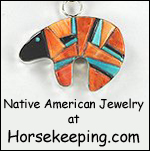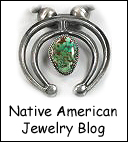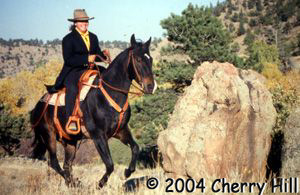Improving Attitude and Confidence
Whether you’re returning to riding after time off or first learning to ride, get in shape before you get in the saddle. This will minimize injury and maximize enjoyment. When you evaluated your rider readiness in last month’s newsletter, perhaps you found a few areas that could use improvement. Here you’ll find exercises and tips specifically tailored for riders to help with those trouble spots.
STAGES OF RIDER DEVELOPMENT
1 – Evaluate, then make a plan.
2 – Focus on attitude, confidence and enough muscular strength to ride for about one hour.
3 – Work on flexibility to attain a correct riding position and use the aids effectively.
4 – Increase your endurance for longer or more demanding riding.
5 – Improve your timing for advanced riding skills.
ATTITUDE
A good attitude is a combination of motivation, optimism, diligence, patience, and honesty. If you think you need an “attitude adjustment”, start by finding or making adequate time to devote to riding. If you approach riding in a hurry, it’s not only harder to have a good attitude but it’s unsafe and often counter-productive.
Associate with happy, positive, successful people, especially during your horse time. You want to avoid folks with unhealthy egos, those that constantly gossip or bellyache, or those involved in illegal or inhumane activities. Learn about visualization, mental imaging, and goal setting and how they can be used to improve your riding.
CONFIDENCE
Confidence comes from knowledge, training, and experience. It’s no secret that confident body language convinces a horse that you are in charge.Two keys to confidence are:
1. Ride a good horse and
2. Work with a good instructor.
Even before you get to actual riding, spend plenty of time with your horse: grooming, tacking and leading so you become accustomed to each other.
So that you can concentrate on your riding, you need the help of a well-trained, patient, experienced horse. Most good “rehab” or school horses are 8-20 years old geldings but some older mares also exhibit great care and patience. Use a horse with an exemplary temperament, one that is not only patient but willing, cooperative, and alert, yet calm. You want a horse that is physically responsive to the aids and balanced and rhythmic in his gaits. A sensitive, thin-skinned, hot-blooded horse, even though well-trained, might react to accidental bumps of the leg or weight shifts as cues. You are usually better off choosing a duller, more cold-blooded horse that will tolerate the mistakes a rider makes when learning balance and rhythm. Such a horse tends to go on steadily despite awkward rider movements.
Choosing an Instructor
There is no substitute for a good instructor and a poor instructor is worse than none at all. So that you learn correctly and you maintain a good opinion of yourself, your horse, and your work, choose your instructor carefully. An excellent trainer may be good with horses but ill suited to working with people.
Look for an instructor with a keen eye and the ability to give you accurate feedback. You might think of your instructor as an experienced, talking mirror. The best instructor is also an excellent rider, trainer, and observer; someone who knows when things are going well and tells you; someone who sees when things are headed in the wrong direction and can tell you in clear terms how to fix it.
Choose an instructor that is appropriate for your goals and capabilities. Some teachers are excellent with beginning riders but do not have the proficiency to take a rider further. Others do not have the patience to work with any but very advanced riders and horses. An instructor with a famous name may not have the time or interest required to work regularly with a re-entry or novice rider. Look for an instructor nearby so you can take frequent lessons.
Give your instructor’s methods a chance to work. If you are convinced mentally that they will not work, they will not work. Be sure you can hear and understand exactly what your instructor is telling you. Misunderstandings can undermine your self confidence and your trust in your trainer.
Confidence Builder – the Mounting Block
One of the most awkward times in learning to ride is mounting and dismounting. You could teach your horse to sit down for you to mount! But a more practical solution is to use a mounting block. Especially if you are short, stiff, or coming back from an injury, a mounting block puts your foot closer to the stirrup and decreases the distance you have to lift your body weight. Whether you use a milk crate, a bucket or an official mounting block, you will find mounting less stressful to your knees and back. In addition, there will be less scrambling and saddle twisting, which your horse will appreciate. You can mount facing the rear or the front of your horse, whichever works best with your physical limitations. Use a quiet, obedient horse because if he steps sideways just as you are getting on, you could find yourself in a wrenching version of the “splits”!

Read Full Post »
![]()













